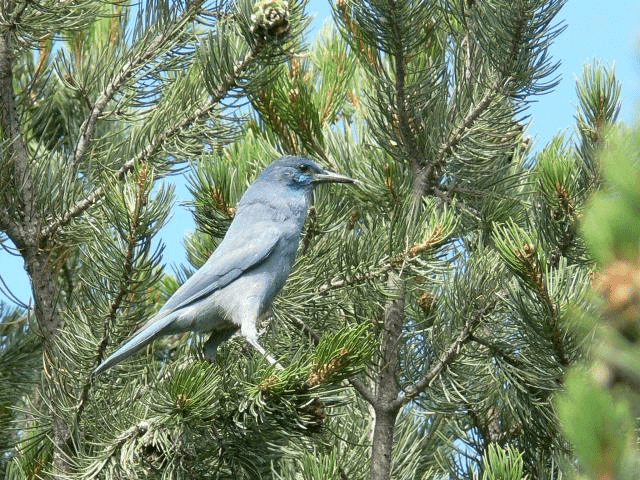Editor’s Note: As I have said before, it’s the small to tiny organizations who do most of the work. Here, Alliance for the Wild Rockies, working on a shoestring budget with basically a single full-time person, is taking on the Goliath of the Forest Service.
Again, my suggestion from having worked in the trenches of conservation for the last quarter of a century, if you help fund conservation organizations in the US, examine them for a few basic criteria:
- Do they have more than ~10 employees?
- What is the ratio of staff actually doing the work to those to those doing such things as ‘member outreach’, fundraising, development, organizing, communications, management, operations, marketing or being a deputy something or another
- Do they get funding from the massive ‘conservation’ funders like bullit, wilburforce, pew, walton, packard, etc
- Are they anthropoenctric or are they biocentric?
- Do they shy away from hard positions?
- What percentage of the budget goes to litigation and direct challenges to bad actions?
If you are supporting organizations that were maybe once aggressive fighters, but have gradually shifted to the new norm in conservation, (don’t make waves, try to be liked) maybe it’s time for you to do some research and shift your support.
Remember:
Power concedes nothing without a demand. It never did and it never will.
Fredrick Douglass
The Manti–La Sal National Forest stretches from central Utah to southeastern Utah and into Colorado. The 1,413,111-acre forest contains the La Sal Mountains, which are the second-highest mountain range in Utah, and parts of the forest are included in the Bears Ears National Monument.
The La Sal Mountains are lush with lakes, pine, aspen and evergreen trees, and wildlife and provide a stunning visual and climactic contrast to nearby Moab’s red rock canyons. In fact, the forest is designated a Category V Forest by the International Union for Conservation of Nature, as a “protected management area” that “has built up a distinct and valuable ecological, biological, cultural, or scenic character.”
Given the stunning beauty of this area, one might credibly wonder why the Forest Service authorized the Manti-La Sal Restoration and Fuels Reduction Project in December. The highly destructive project calls for logging, mastication (grinding trees with huge machines), and burning across 952,115 acres (1,487 square miles) including 454,452 acres (710 square miles) of roadless areas in habitat for bighorn sheep, mule deer, elk, bears, raptors, and birds, including the imperiled pinion jay.
Although called a “restoration project,” the Manti-La Sal Forest project will remove both conifers and aspen by logging and burning inside designated Roadless Areas across the Forest, which is exactly why the Alliance for the Wild Rockies, Native Ecosystems Council, Wildlands Defense, and Council on Fish and Wildlife are going to federal court to stop this senseless and illegal project.

Pinyon jay populations have declined by 85% in the last 50 years, making them the fastest declining bird species in North America. The U.S. Fish and Wildlife Service recently issued a decision that the pinyon jays may be warranted to be listed as threatened under the Endangered Species Act, mainly because of loss of habitat.
Pinyon jays are unique and social birds that travel in large flocks and play a significant role in maintaining the biodiversity of the West. They extract and bury seeds of the piñon pine, commonly known as pine nuts, and since the birds do not retrieve all their cached seeds, the remaining seeds germinate and replenish the pinyon-juniper woodlands that are critical habitat for their survival.
Without pinyon jays, it’s unclear if the piñon pine tree will continue to persist. Yet, under this project, the Manti-La Sal National Forest wants to log, masticate and burn approximately 170,000 acres of the pinyon-juniper habitat.

This logging is a huge threat to the Manti La-Sal’s beautiful roadless forests, which are rich in biological diversity and beloved by hunters, hikers and many others and serve as a critical watershed fed by protecting mountain snowpack in our ever hotter and drier climate.
Forest Service officials are supposed to protect these wild places and the plants and animals that depend on them, but with this logging plan they’re ignoring that duty and violating the Roadless Rule by choosing a “one-size fits all approach” in applying the narrow exceptions to the Rule across vast swaths of roadless lands. Astoundingly, the agency has also refused to disclose exactly where or when the logging will occur.
In conclusion, the Forest Service not only broke the law with this project, but is spending vast amounts of taxpayers’ money turning Pinyon Jay pine nut forests, Dusky Grouse wintering trees, and Western Tanager breeding sites into bare dirt, wood chips, weeds, and ashes-which is exactly why we filed our lawsuit to stop this illegal project from destroying this fragile and critically important habitat.








